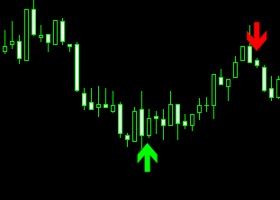Oil prices fell to six-year lows on Monday in the face of concerns that a glut in the United States was outpacing already-brimming storage facilities.
Additionally, the Organization of the Petroleum Exporting Countries published a report suggesting that the cartel remained reluctant to intervene to prop up prices.
The direction of oil prices, which had risen sharply from January lows, has fallen back in recent days. Traders are now focused on the second quarter of the year, when demand for oil is traditionally weak because of the end of winter and scheduled refinery shutdowns for maintenance.
On Monday, the price of West Texas Intermediate crude, the main United States benchmark, fell about 2 percent to about $44 a barrel, a six-year low, while Brent crude, the international benchmark, fell by about 2 percent to about $53 a barrel.
Oil markets continue to focus on OPEC because its members could quickly alter the markets’ balance by cutting production. But while some members, including Nigeria and Venezuela, would like to see cuts, Saudi Arabia and its Gulf allies show little inclination to change the policy they agreed to in the fall: Protect market share regardless of what happens to prices.
This video is not currently supported on your browser.
Oil Prices’ ‘Spectrum of Pain’
As the price of crude oil fluctuates, why some countries are faring much better than others.
By Quynhanh Do on Publish Date January 27, 2015. Photo by Carlos Garcia Rawlins/Reuters. Watch in Times Video »While OPEC’s competence at managing the market was always much in question, the organization’s decision to stay on the sidelines has opened the way for volatile price movements.
In the view of market participants, OPEC’s role as the swing producer has moved to the United States and, in particular, to the producers of oil from shale rock. These companies have helped increase American production by more than four million barrels a day since 2009, far more than the combined increases in the rest of the world.
Many analysts say that with low prices discouraging investment in drilling, production growth in the United States will level off and even begin to decline. But when this change will happen is a matter of speculation.
Continue reading the main storyRelated Coverage of Oil and Its Economic Impact
A group of oil companies working in Texas and North Dakota and elsewhere is far different from the gatherings of OPEC oil ministers that decide whether to cut or increase supply at meetings in Vienna.
“A new math for oil has emerged,” said Bhushan Bahree, an analyst at IHS Energy, a business information company in Washington. “The new math is the mix of variables that shape the pace and level of U.S. oil production as well as investment in high-cost sources of supply.”
Mr. Bahree said that while the market was trying to find a new equilibrium, “it is likely to flounder in the search for a new price range.”
Continue reading the main storyOPEC made its own guess about when production might begin declining in the United States in its monthly oil report, published on Monday. Asserting that the output of a typical shale well can fall by 60 percent annually and noting the continued decline in the number of drilling rigs operating in the United States, OPEC suggested that “a drop in production can be expected to follow, possibly by late 2015.”
While that might seem like encouraging news to oil producers, it also means that OPEC, or at least Saudi Arabia, may be in no hurry to cut production at the group’s next meeting, in June.
The Saudis argue that over time, economics will work in their favor because their oil costs a few dollars a barrel to produce, while oil from shale, deepwater wells and Canadian oil sands is much more expensive. The Saudis also contend that any move to prop up prices now will encourage more investment in production in the United States and elsewhere.
In a speech on Sunday in Doha, Qatar, Ibrahim al-Muhanna, an adviser to the Saudi oil minister, also seemed to counsel patience. “We have a long-term view, and we do not make knee-jerk reactions to headlines,” he said, according to a text of his speech.
Mr. al-Muhanna said he was confident that demand from a strong global economy would prove sufficient to soak up supplies and that “prices will firm up.”
OPEC’s report on Monday was less sanguine. The group forecast that demand for its crude would average about 29.2 million barrels a day in 2015. That is about 800,000 barrels a day less than OPEC said it was producing in February.
A version of this article appears in print on March 17, 2015, on page B1 of the New York edition with the headline: Prices Fall to 6-Year Low for U.S. Oil. Order Reprints| Today's Paper|Subscribe
Trending
Oscar Nominations 2016
Alan Rickman, Actor Known for ‘Harry Potter’ and ‘Die Hard,’ Dies at...
Ted Cruz Didn’t Disclose Loan From Goldman Sachs for His First Senate...
Contributing Op-Ed Writer: Why I Will Never Vote for Donald Trump
Powerball Has 3 Big Winners, and There May Be More
Op-Ed Columnist: The Tempting of Bernie Sanders
Just in Case: Dear Powerball Winner: Take Our Advice and Take the...
Jakarta Attack Kills at Least 2, Indonesian Officials Say
Op-Ed Columnist: The Other Obama Legacy
Your Thursday Briefing: Istanbul, Jakarta, Powerball
View More Trending Stories »
More in International Business
Go to the International Business Section »
North Korea Is Newest Frontier for a Daredevil Investor
Lawyer for Iran’s Central Bank Faces Skepticism at Supreme Court
Global Markets Follow Wall Street Lower
Renault Shares Plunge After Its Offices Are Searched
Shares of the French carmaker fell on the news that investigators had gone to several of its facilities, drawing fears it might...
Bank of England Keeps Interest Rates Steady
The Bank of England has voted to keep its key interest rate at a record low of 0.5 percent as weak inflation keeps the pressure off...
U.S. Will Track Secret Buyers of Luxury Real Estate
Recommended for You
Go to All Recommendations »
Oil Prices Slide Again, and the Bottom Is Not Yet in Sight
Russian Shares and Ruble Fall as Oil Prices Continue to Tumble
Stocks Slide as Worries Persist Over Global Growth
Go to Home Page »


